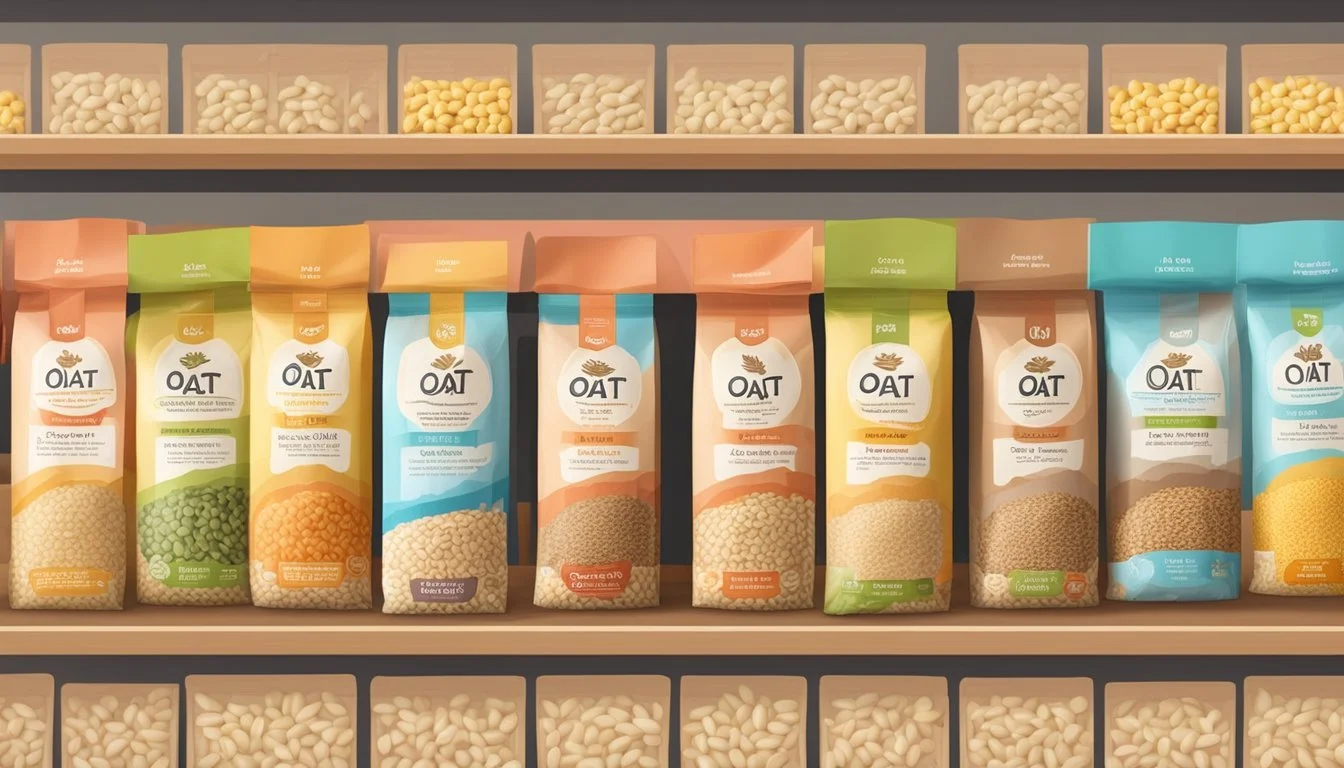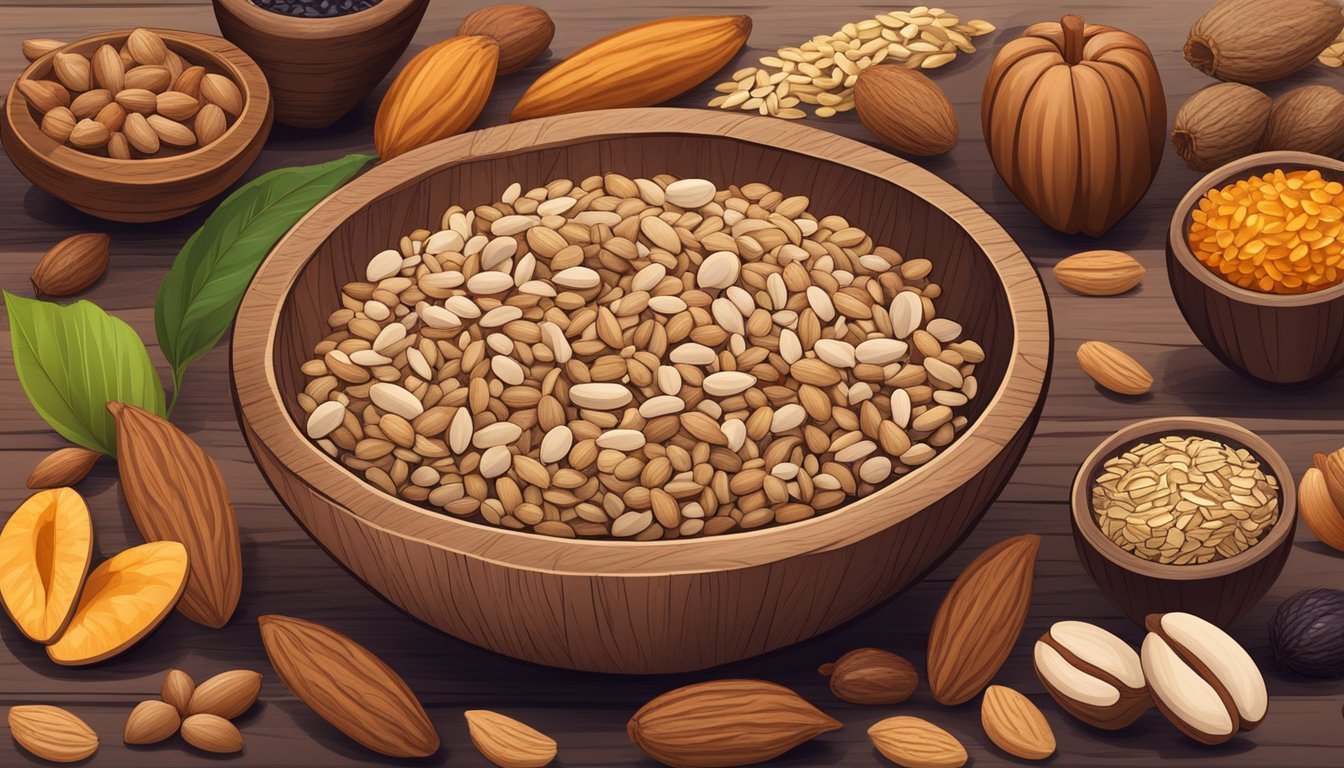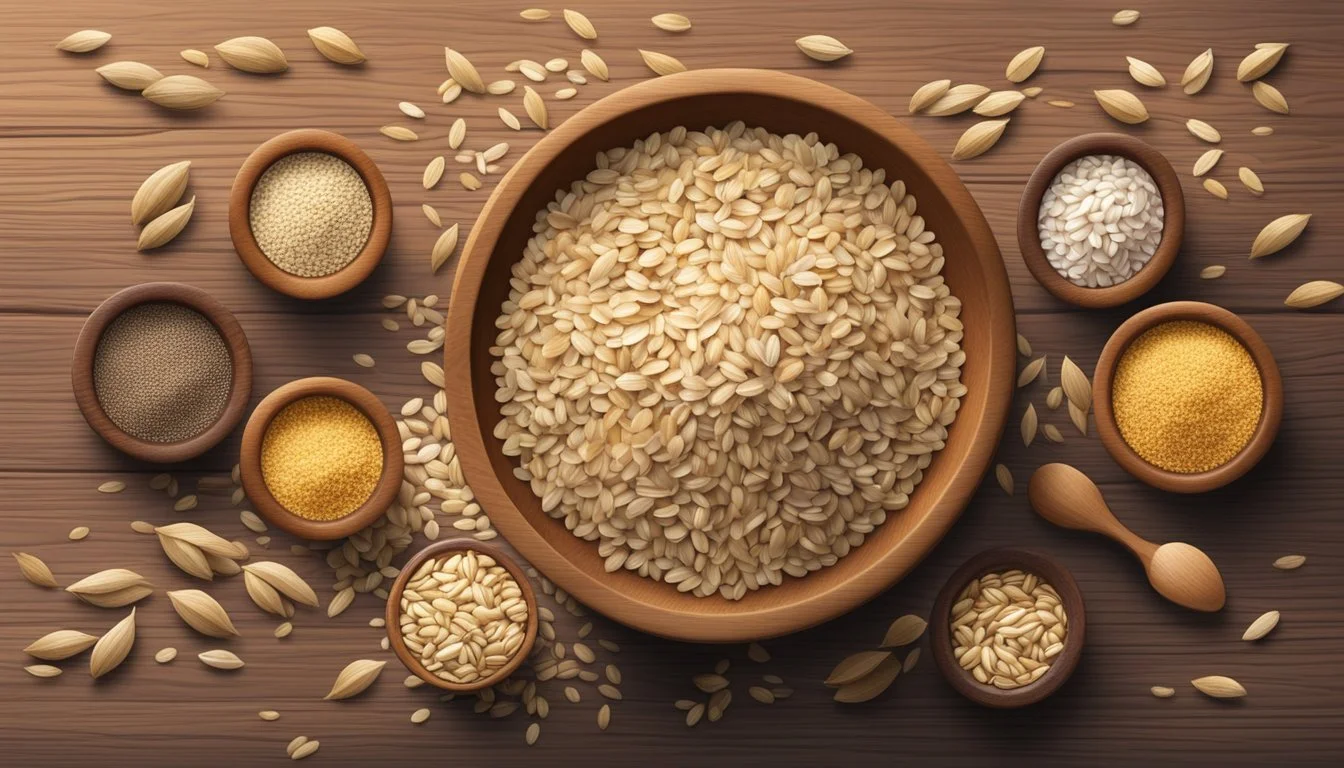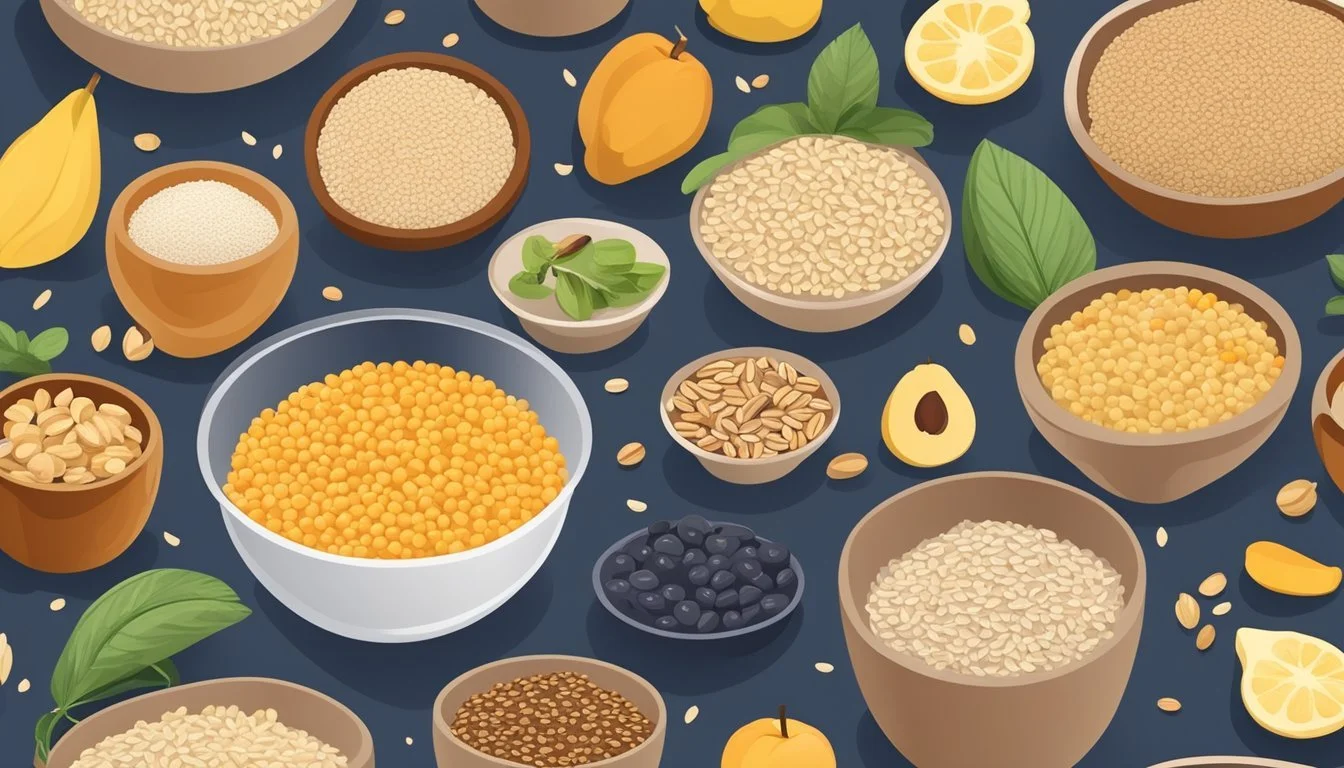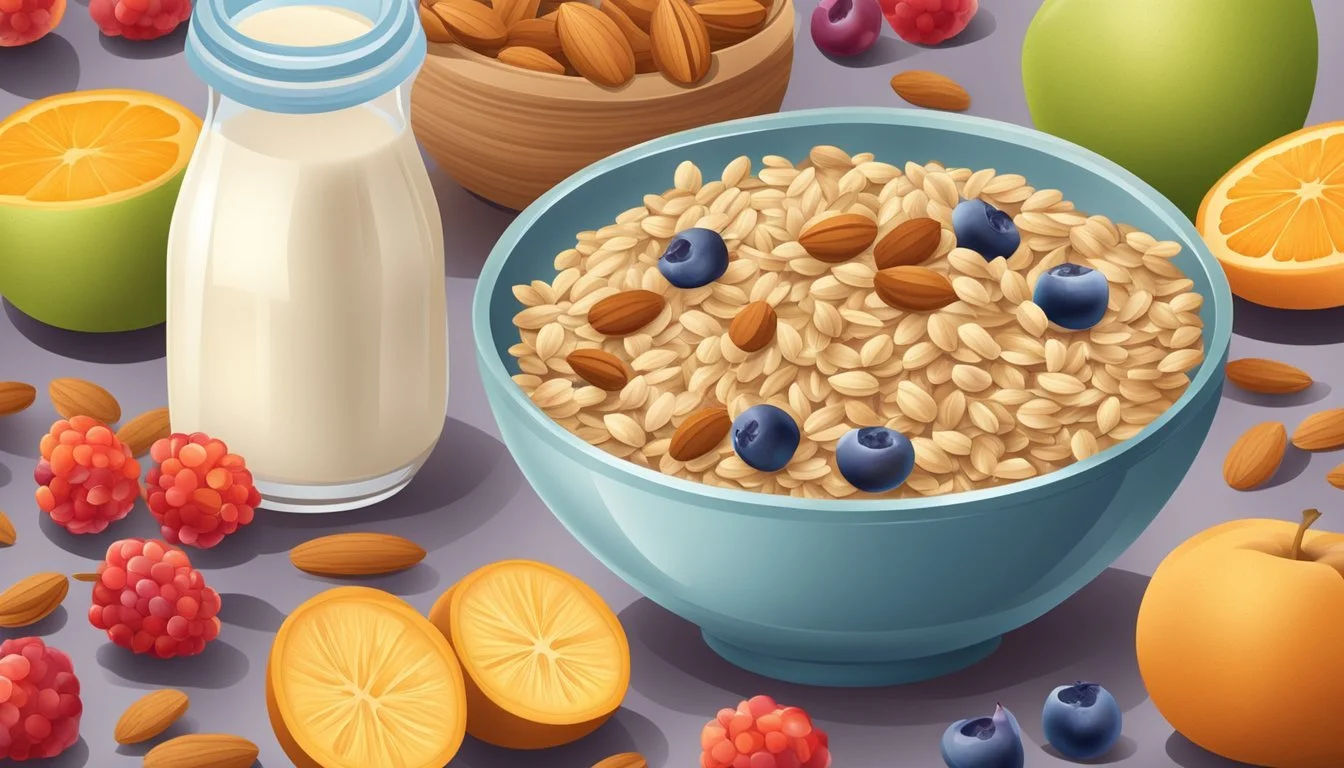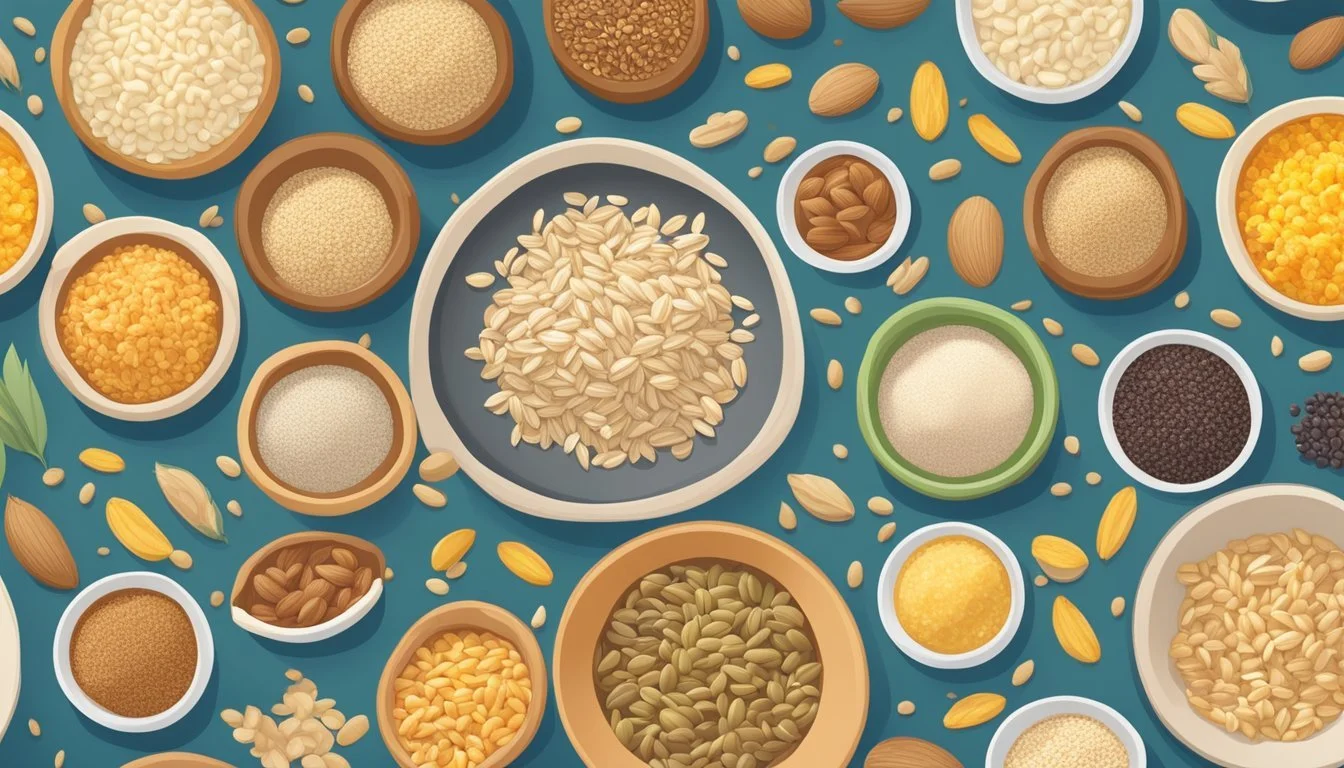Oat Groats Substitutes
Top Alternatives for Your Recipes
Oat groats, the hulled kernels of the oat grain, are a nutritious and versatile ingredient. For those seeking alternatives, several substitutes can be used in various recipes while retaining similar textures and flavors. Buckwheat groats offer a nutty flavor and chewy consistency, making them ideal for both sweet and savory dishes. Quinoa flakes, packed with protein and fiber, cook quickly and mimic the texture of rolled oats, providing a hearty base for breakfast bowls and baked goods.
Health-conscious individuals may also turn to amaranth, an ancient grain known for its high nutritional value. Like oat groats, amaranth is rich in protein and fiber, and its slightly earthy taste can enhance both porridge and granola recipes. Similarly, rice flakes serve as a gluten-free alternative that can be used in baked goods and as a cereal base. These substitutes not only provide variety but also cater to different dietary needs, ensuring that everyone can enjoy wholesome meals.
Incorporating these substitutes can offer similar health benefits to oat groats, such as maintaining optimal digestion and providing sustained energy. Whether used for their nutritional value or to accommodate dietary preferences, these alternatives expand the possibilities for delicious and healthy dishes.
Understanding Oat Groats
Oat groats are whole grains with the outermost inedible chaff removed. They are rich in nutrients and have various culinary uses. Their consumption is associated with several health benefits, especially for heart health and cholesterol management.
Nutritional Profile of Oat Groats
Oat groats boast an impressive nutritional profile. They contain protein, fiber, and healthy fats, making them a wholesome food choice.
Protein: Approximately 7 grams per serving
Fiber: Around 4 grams per serving, including beta-glucan
Healthy Fats: About 2 grams per serving
In addition, they offer essential antioxidants and minerals like iron and magnesium, contributing to various bodily functions and overall health.
Culinary Uses of Oat Groats
Oat groats are versatile in the kitchen. They can be used in:
Breakfast: Cooked into porridge with a creamy texture
Salads: Added to grain salads for a chewy texture
Baking: Ground into flour for bread and muffins
Soaking them overnight can reduce cooking time. They are typically cooked in a 4:1 water-to-oat ratio to ensure a tender texture.
Benefits for Heart Health and Cholesterol Levels
Eating oat groats can positively impact heart health. The beta-glucan fiber helps lower LDL cholesterol levels. This soluble fiber forms a gel-like substance in the intestines, which binds to cholesterol-rich bile acids.
Regular consumption of whole grains like oat groats may reduce the risk of cardiovascular disease. Nutrients like antioxidants further support their role in promoting a healthy heart and maintaining good cholesterol levels.
Popular Oat Groat Substitutes
Several substitutes for oat groats offer both nutritional diversity and textural similarity while being gluten-free. Here are three effective alternatives: buckwheat groats, quinoa, and brown rice.
Buckwheat Groats
Buckwheat groats are an excellent substitute for oat groats due to their nutritional benefits and similar texture. Buckwheat is gluten-free and rich in protein, fiber, and antioxidants.
These groats absorb flavors well, making them versatile in both sweet and savory dishes. They cook faster than oat groats, usually needing only about 15-20 minutes. Buckwheat also offers essential minerals like manganese, magnesium, and zinc, contributing to overall health.
Quinoa
Quinoa is highly valued for its nutritional benefits and versatility. This gluten-free seed is high in protein, containing all nine essential amino acids, making it a complete protein source. Quinoa has a mildly nutty flavor and a fluffy texture when cooked.
It typically requires about 15 minutes to cook and pairs well with various ingredients, from fruits to vegetables and meats. Quinoa is also rich in fiber, iron, and magnesium, contributing to cardiovascular health and digestive wellbeing.
Brown Rice
Brown rice serves as another viable substitute for oat groats, particularly in savory dishes. It retains the bran layer, making it more nutritious than white rice. Brown rice is gluten-free and offers fiber, vitamins, and minerals such as B vitamins and selenium.
Its chewy texture and nutty taste enhance soups, grain bowls, and casseroles. Although it has a longer cooking time, approximately 40-45 minutes, it provides a hearty base for meals. Brown rice is also known for its ability to help maintain healthy cholesterol levels.
Specialty Grains and Seeds as Substitutes
Specialty grains and seeds provide nutrient-dense alternatives to oat groats. They offer distinct textures and flavors, along with various health benefits such as soluble fiber, omega-3 fatty acids, and essential vitamins and minerals.
Amaranth and Millet
Amaranth is a versatile grain known for its high protein content and abundance of minerals like magnesium, phosphorus, and iron. It has a slightly nutty flavor and a chewy texture, making it ideal for both sweet and savory dishes. Amaranth is gluten-free, making it suitable for those with gluten sensitivities. When cooked, it forms a porridge-like consistency, which can be used in breakfast bowls, soups, or as a side dish.
Millet is another excellent substitute, offering a mild, slightly sweet flavor. It contains a good amount of soluble fiber and is rich in essential vitamins and minerals, including magnesium and phosphorus. Millet can be toasted before cooking to enhance its natural flavors. It cooks relatively quickly and can be used in salads, as a rice substitute, or in baking. Its versatility makes it a valuable addition to gluten-free diets.
Chia Seeds and Flaxseed
Chia Seeds are tiny powerhouses packed with omega-3 fatty acids, soluble fiber, and a range of vitamins and minerals. They can absorb up to 12 times their weight in liquid, forming a gel-like consistency. This makes them ideal for thickening puddings, smoothies, and sauces. Additionally, chia seeds can be used as an egg substitute in baking, providing moisture and binding properties.
Flaxseed is rich in omega-3 fatty acids and soluble fiber, making it a highly nutritious option. Ground flaxseed can replace oat groats in baking recipes, offering a nutty flavor and dense texture. It can also be used to create a flax "egg" by mixing ground flaxseed with water, which acts as a binder in vegan recipes. Flaxseed's nutrient profile includes essential vitamins and minerals like magnesium, iron, and phosphorus, contributing to a balanced diet.
Nuts and Non-Grain Alternatives
Nuts and seeds offer versatile, healthy substitutes for oat groats. These alternatives often provide unique textures and nutritional profiles, making them excellent choices for various recipes.
Almond Meal and Almond Flour
Almond Meal and Almond Flour are both derived from ground almonds but differ in texture and use. Almond meal is typically coarser, with the skin included, while almond flour is finer and blanched.
Both are rich in Vitamin E and healthy fats, making them excellent for keto-friendly diets. They can replace oat groats in baked goods, providing a slightly nutty flavor. Due to the absence of gluten, recipes might require additional binding agents such as eggs or xanthan gum.
A key benefit is increased magnesium and protein content, beneficial for muscle function and bone health. Almond flour is particularly useful in recipes requiring a finer texture.
Sunflower Seeds and Hemp Seeds
Sunflower Seeds and Hemp Seeds serve as nutritious swaps for oat groats in various dishes. Sunflower seeds, available hulled or whole, are rich in Vitamin E and healthy fats.
Hemp seeds are notable for their complete protein profile, containing all essential amino acids. Their mild, nutty flavor makes them versatile in both savory and sweet recipes. They are particularly beneficial for heart health due to their omega-3 and omega-6 fatty acids.
Sunflower seeds can be ground into a meal for use in baking or added whole to granolas and salads. Hemp seeds can be sprinkled on cereals, blended into smoothies, or used in baked goods for added texture and nutrition.
Substituting Oats in Recipes
Substituting oats in recipes can be quite simple when you understand the various alternatives available. Different substitutes work best depending on whether you are making baked goods, porridge, oatmeal, or savory dishes.
For Baked Goods
When replacing oats in baked goods like cookies and granola bars, you can use quinoa flakes or buckwheat groats. Both can be substituted at a 1:1 ratio.
Quinoa flakes have a mild flavor and a slightly crunchy texture that goes well with cookies and bars. They don't need pre-soaking and blend seamlessly into the batter.
Buckwheat groats, when ground into flakes, provide a nutty taste and chewy texture, similar to oats. They are excellent for crumbly pastries and dense bread. Almond meal is another option, providing a nutty flavor and enhancing the sweetness of desserts.
For Porridge and Oatmeal
For an oat-free porridge, rice flakes and quinoa flakes are good substitutes.
Rice flakes, available in white and brown varieties, expand when cooked with a 2:1 ratio of water to flakes. The resulting porridge is mildly flavored and can be customized with fruits, nuts, and sweeteners.
Quinoa flakes also work wonderfully for porridge. Cook them using a 1:2 ratio with liquid, and they are ready in minutes. Their high protein content and slightly crunchy texture make for a nourishing breakfast.
For Savory Dishes
Savory dishes can benefit from buckwheat groats or quinoa as oat replacements.
Whole buckwheat groats add a unique, nutty flavor and chewy texture, ideal for hearty dishes. They work well in soups, stews, or as a base for grain bowls. They cook relatively quickly, making them a convenient option.
Quinoa, known for its versatility, can substitute oats in savory recipes. With its slightly nutty flavor and fluffy texture, it's perfect for salads and pilafs. Cooking quinoa requires a simple 1:2 ratio of grains to water, and it cooks within 15 minutes.
Choosing the right oat substitute ensures your recipes maintain their desired flavor and texture while catering to dietary needs.
Technical Considerations
When substituting oat groats, it's important to understand their processing, preparation, cooking times, liquid ratios, and storage requirements. These factors ensure your dish maintains the desired texture and flavor.
Processing and Preparation
Oat groats require minimal processing, which preserves their nutritional value. Unlike oats that have been cut, rolled, or instantized, oat groats are whole kernels.
They can be prepared by steaming, simmering, or using a slow cooker. For best results, rinsing the groats before cooking can help remove any residual husks.
Most recipes use a 1:1 substitution ratio with steel-cut oats. This straightforward substitution allows for easy adjustments in various dishes, both savory and sweet.
Cooking Times and Liquid Ratios
Oat groats have a longer cooking time compared to other forms of oats. The typical cooking time ranges from 45 minutes to an hour. Employing techniques like soaking overnight can reduce this time.
A standard liquid-to-groat ratio is 3:1. This ensures that the groats are fully hydrated and achieve the right texture. In slow cookers, the low and slow approach perfectly suits their extended cooking needs. Microwaving is less effective due to uneven heat distribution.
Storage and Shelf Life
Proper storage of oat groats extends their shelf life and maintains freshness. Keep them in an airtight container in a cool, dry place. This method prevents moisture and pests from spoiling them.
Oat groats can last up to two years when stored under optimal conditions. Freezing can further prolong their shelf life without compromising quality.
For ready-to-use oat groats, cooking and then refrigerating is an option. They stay fresh for about a week when stored properly. Using these methods ensures that oat groats remain a versatile and reliable pantry staple.
Dietary Considerations
When substituting oat groats, it's essential to consider factors like dietary restrictions, protein requirements, and compliance with specific diets. This ensures the substitutions benefit overall health and dietary needs.
Gluten-Free Diet Compliance
For those with gluten intolerance or Celiac disease, choosing gluten-free substitutes is crucial. Oat groats are naturally gluten-free but can be contaminated with gluten during processing. Ensure that substitutes like quinoa flakes, buckwheat groats, and rice flakes are certified gluten-free to avoid cross-contamination. These alternatives can provide the same hearty texture and nutritional benefits as oat groats without gluten.
Impact on Ketogenic Diet
The ketogenic diet requires low carbohydrate intake while promoting high fat and moderate protein consumption. Oat groats, being higher in carbohydrates, are typically not suitable for a ketogenic diet. Suitable substitutes include almond meal and coconut flakes, which are lower in carbs and offer high fat content. For those on keto, these substitutes can help maintain ketosis while ensuring variety in meals.
Ensuring Adequate Protein Intake
While oat groats provide a good amount of protein, some substitutes may fall short. Quinoa flakes and buckwheat groats are excellent alternatives as they offer higher protein content compared to other grains. Additionally, incorporating nuts and seeds or using almond meal can also help meet protein needs. Ensuring balanced protein intake is vital, especially for those with heightened dietary requirements.
By considering these dietary aspects, individuals can make informed choices that align with their health goals and dietary restrictions.
Enhancing Nutritional Value
Substituting oat groats can significantly boost the nutritional profile of dishes by incorporating key vitamins and minerals. This section explores the methods for enhancing the nutritional value of oat groat substitutes.
Adding Vitamins and Minerals
To enhance the vitamins and minerals in oat groat substitutes, consider the following foods:
Quinoa: This pseudo-cereal is rich in iron, magnesium, and B vitamins. It's a high-protein alternative that provides essential amino acids.
Buckwheat groats: Rich in manganese and magnesium, they also offer ample amounts of phosphorus and B vitamins. Toasting the groats can further elevate their nutritional value.
Amaranth: Contains high levels of calcium, iron, and fiber. It's a versatile grain, enhancing both the nutritional content and texture of the substitute dishes.
Incorporating these alternatives into meals can significantly increase nutrient intake and diversity.
Creative Mix-Ins and Toppings
Enhance the flavor and nutrition of oat groats with a variety of creative mix-ins and toppings. Incorporating different ingredients can add texture, sweetness, and additional health benefits.
Fruits, Nuts, and Sweeteners
Fruits: Fresh or dried fruits can make a delightful addition. Fresh fruits like berries, bananas, or apples bring a natural sweetness and freshness. Dried fruits such as raisins, cranberries, and apricots add a chewy texture and concentrated flavor.
Nuts and Seeds: Crushed nuts like almonds, walnuts, and pecans provide crunch and healthy fats. Seeds such as chia, flax, and pumpkin seeds also add texture and nutritional value.
Sweeteners: Natural sweeteners can enhance your oat groats. Honey, maple syrup, and agave nectar offer sweetness without refined sugars. For a rich and unique flavor, consider adding vanilla extract or a sprinkle of cinnamon.
Mix-ins like coconut flakes and nut butters can also contribute to both the taste and nutritional profile of your meal.

